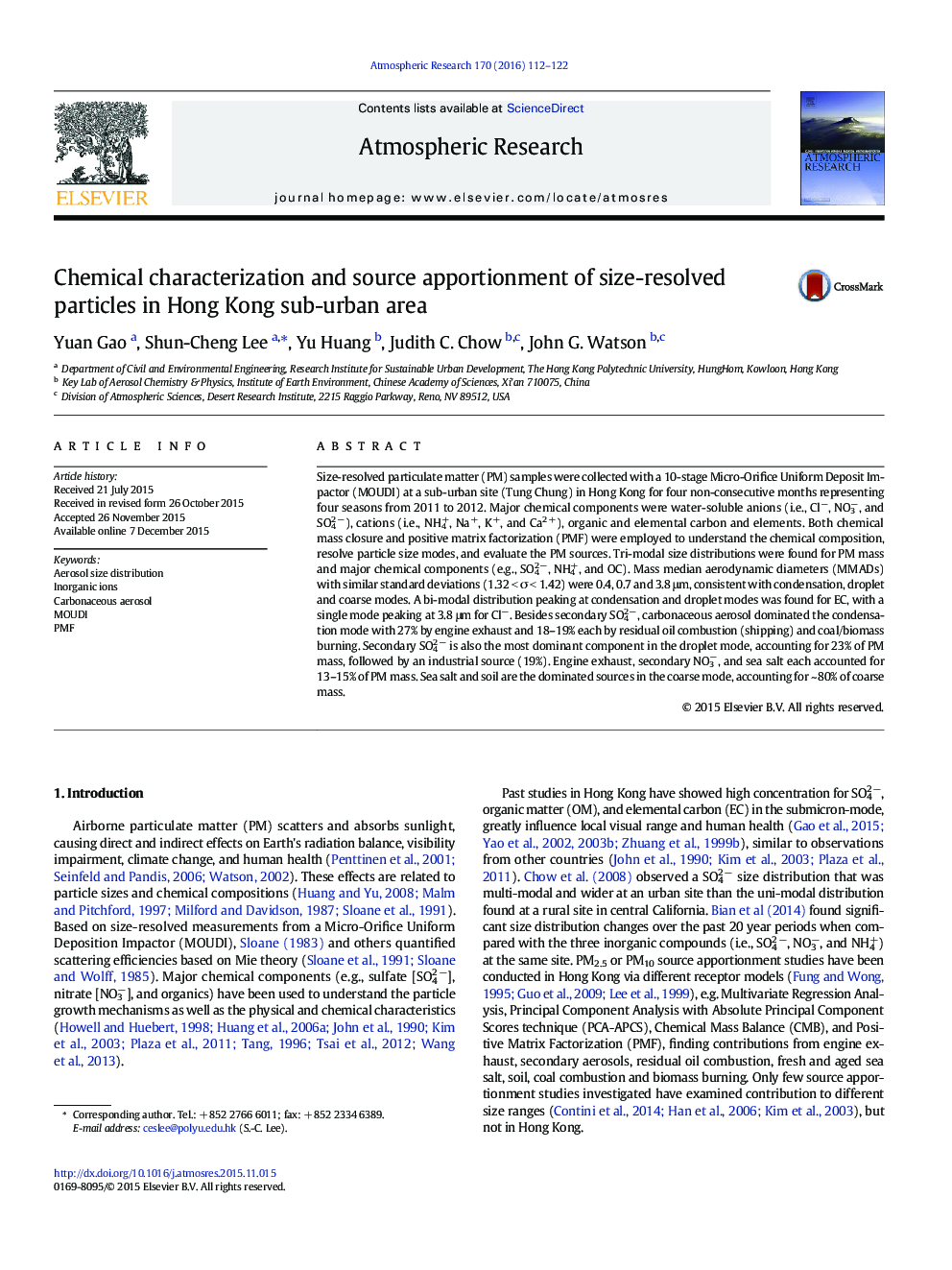| Article ID | Journal | Published Year | Pages | File Type |
|---|---|---|---|---|
| 4449587 | Atmospheric Research | 2016 | 11 Pages |
•Tri-modal size distribution pattern was observed in PM mass and SO42 −, NH4+ and OC.•Residual oil combustion source was only observed in condensation mode.•Over 80% of coarse mode particles were from natural sources (sea salt).
Size-resolved particulate matter (PM) samples were collected with a 10-stage Micro-Orifice Uniform Deposit Impactor (MOUDI) at a sub-urban site (Tung Chung) in Hong Kong for four non-consecutive months representing four seasons from 2011 to 2012. Major chemical components were water-soluble anions (i.e., Cl−, NO3−, and SO42 −), cations (i.e., NH4+, Na+, K+, and Ca2 +), organic and elemental carbon and elements. Both chemical mass closure and positive matrix factorization (PMF) were employed to understand the chemical composition, resolve particle size modes, and evaluate the PM sources. Tri-modal size distributions were found for PM mass and major chemical components (e.g., SO42 −, NH4+, and OC). Mass median aerodynamic diameters (MMADs) with similar standard deviations (1.32 < σ < 1.42) were 0.4, 0.7 and 3.8 μm, consistent with condensation, droplet and coarse modes. A bi-modal distribution peaking at condensation and droplet modes was found for EC, with a single mode peaking at 3.8 μm for Cl−. Besides secondary SO42 −, carbonaceous aerosol dominated the condensation mode with 27% by engine exhaust and 18–19% each by residual oil combustion (shipping) and coal/biomass burning. Secondary SO42 − is also the most dominant component in the droplet mode, accounting for 23% of PM mass, followed by an industrial source (19%). Engine exhaust, secondary NO3−, and sea salt each accounted for 13–15% of PM mass. Sea salt and soil are the dominated sources in the coarse mode, accounting for ~ 80% of coarse mass.
